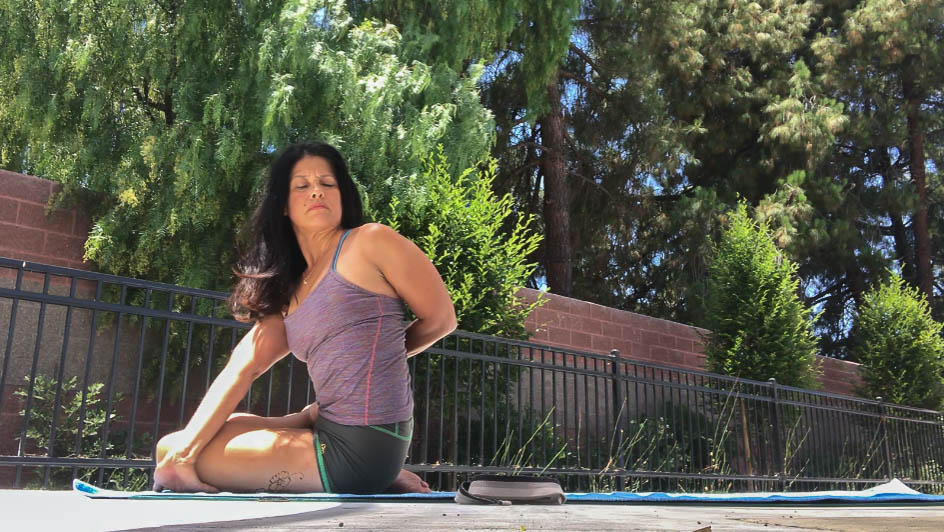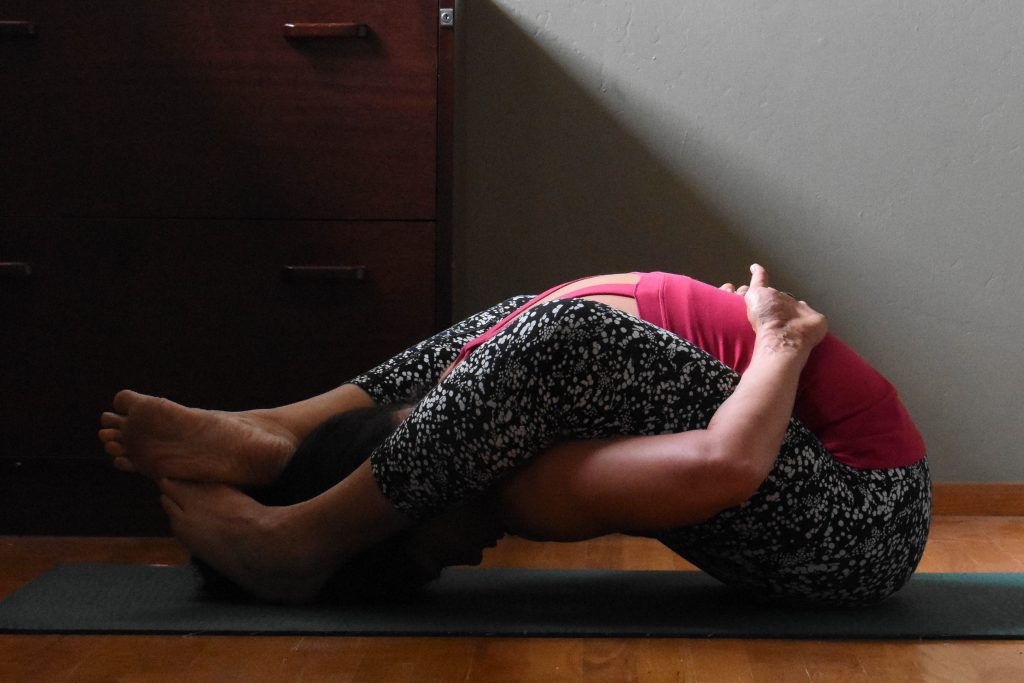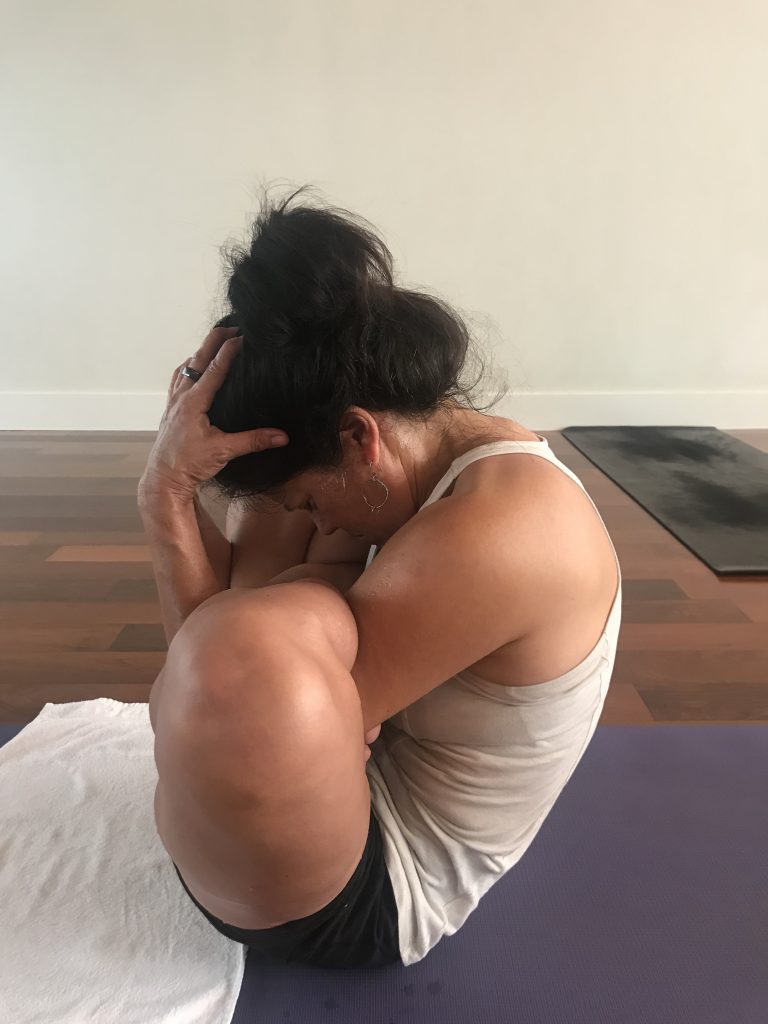Blog
When Called to Serve
Less than an hour after teaching my test out class to officially get my JOY of Yoga 200h Teaching Certification, I was asked to start a class for a teacher who had gotten caught in traffic due to a big accident on Highway 17. “It will be about 30 minutes,” she said, “just teach them what you just taught us. You’ll do fine.” I laugh nervously but wasn’t going to say “no” for they needed me and I just cited a quote in my test out about being called upon to teach.
When we are called to serve, we need to act as if we are qualified — even when we think we are not truly capable.” – Jennifer Prugh, Founder of Breathe Together Yoga.
When I spoke of this feeling of being called to serve, I was thinking about (1) my teacher needing assistance with our Mysore Program, and (2) about a request to substitute/guest teach at a new Ashtanga Yoga Studio in Los Altos. I never dreamed I’d be called to pop into a Vinyasa Yoga class to teach. Still, a calling is a calling. And I am not one to leave someone in need of help if I have something to offer.
So…I did it! I rolled out my mat at the front of the class and introduced myself. I explaining that their teacher was delayed but on her way, and that I there to hold the space for her until she arrived, adding that I was going to get them started with a few sun salutations and a sampling of the ashtanga primary series.
I taught for about 50 minutes then welcomed their regular teacher into the space when she arrived. Upon leaving the room, I had already begun a list of inner critique for my teaching. This included not learning anyone in the room’s name. *frown* I heard the class clapping as I left and knew it could mean one or two things: Either they were happy with my teaching OR they were relieved that their teacher had made it there. Nonetheless, I held my head high in knowing that I had done my best — and next time will try to do even better.
lib·er·at·ed
I have been working diligently on the last few poses before the 7 headstands of Intermediate Series (aka nadi shodhana or Second Series). Like the rest of Intermediate Series, mastering these poses has not come easy. In fact, I don’t know that one would say that I have “mastered” any of them. Unlike Primary Series, where I yearned for the next pose almost immediately after receiving a new one, my journey in this series has been unhurried and somewhat cautious.
I remember a point when my unwillingness to meet kapotasana had changed to a curiosity of the pose. I began working overtime on laghu vajrasana hoping to meet my teacher’s expectations of what she would consider mastery (or an acceptable level of proficiency). Then, kapotasana had its way with me. It undid me from the outside in and left me sobbing. Some time later, the leg-behind-the-head poses began working on me — as I began working on them. They broke me down literally (sacroiliac joint issues). I broke up with them for a bit. Then, after a time of missing them, rekindled the relationship. Then came pincha mayurasana, karandavasana, mayrasana, vatayanasana. One after the other, with a few gentler poses dropped in for a little sanity check, the poses told me that I “can’t” and that I am “not enough” every morning. By the time I reach supta urdhva pada vajrasana, I’ve surrendered to the practice.
When Leigha, our guest teacher nonchalantly mentioned the plan to finish off the series by the end of the month, a part of me thought she might change her mind once she saw my practice. I feared that I might lose a few poses, in fact. I didn’t lose any, but she didn’t let me skate either.
- She narrowed my hands in pincha mayurasana
- I am dropping each leg (alternating sides) into half lotus in the arm balance for karadavasana
- My vatayasana got a major overhaul with seemingly impossible requirements that I didn’t think possible
- No grabbing a strap in supta urdhva pada vajrasana. It’s the toe! And the knees are insanely close together in the landing
There was so much work to do and, although July has 31 days, the month hardly seemed long enough to master the task(s) at hand.

Strangely enough, I no longer was satisfied with what I had; the carrot had been dandled and I was now chasing it down. Once again, I began working overtime — studying the poses and practicing them on rest days (moon days and on Saturdays). My practice took on a new infectious persona of sorts. She woke me up before my alarm, and found her way into my dreams as well. She beat me down energetically so that I was fully worn out early in the evenings too. In an odd way, it was liberating.
So, it was pretty funny when Leigha cheerfully announced that mukta hasta was coming my way. Thinking she said mukha (face), I asked her what she meant. I was still doing my sun salutations. “MukTa”, she said, “means ‘liberated’.” She could tell that I still didn’t know what she was referencing. “You’re going to be getting a few headstands today. So get ready.”
*smile*
When we work from a place of ‘I’m enough’, we stop screaming and start listening. We are kinder and gentler to the people around us, and we’re kinder and gentler to ourselves.” -Brené Brown
I must admit that, after all my hard work, I do feel kind of liberated to be coming to the end of Intermediate. I know that I still have a lot of work to do in those poses that used to have me believing that I wasn’t enough. And that’s okay.
Practice with Intention
The invitation to offer up the benefits of your practice to someone else is not uncommon. When you are going through your own personal struggles, this invitation may feel like an unreasonable request. It is just an invitation. There is no judgment on whether or not you choose to do so. Furthermore, the “offering” is one of sharing rather than a complete relinquishing of benefit.
On Tuesday morning, my head was filled with worry as I stepped onto my mat. Later that day, I would undergo a mammography-assisted needle biopsy (stereotactic needle biopsy) to determine if the abnormal clustering of micro-calcifications in my right breast were cancerous or of any other worrisome finding. While the probability of cancer was 20%, I was not reassured. My mind had already leaped to preparing for the worse — with the positive aspect lying in the fact that most of these cases are early stage (0 stage) cancer with a very good survival rate. If cancer, treatment would likely consist of a mastectomy and radiation. As you may imagine, I had not been sleeping well since being told that the radiologist reading my serial mammograms recommended a biopsy be scheduled as soon as possible.
I brought my hands to prayer and, instead of the opening chant, I simply began praying that I would be able to face both the procedure and the outcome with a clear, focused, and positive mindset and be able to utilize the abilities I have gained from my daily practice to do so. I thought about a few women who’s battle with cancer had not been going smoothly. Then, I thought about the women who were sitting with the same unknown (outcome-yet-to-be-determined) as me. I prayed for them as well. Then, before I began the first sun salutation, I dedicated my practice these women — praying that whatever benefits I gained would also be shared with them.
Then, I began my practice… Read More
a herd of turtles
I have been actively working on my goal to complete my certification. However, my progress is akin to a herd of turtles leaving the start of a race. Nonetheless, I *am* moving in the right direction.
Last Friday, I made my 1st attempt at leading a student through the half primary series. My student for the day was well versed in the series and it was difficult for me to simplify my teaching cues for her as I wanted the practice to be beneficial for her as well as me. My accumulated knowledge of the practice, compounded by the lessons I have learned from the various injuries experienced over the years, spewed forth a multitude of possible cues to choose from during this teaching session. This was much like the swirling of thoughts one sometimes experiences during their practice. I had to remind myself to return to the breath: my own, and that of my student.

Meanwhile, my beginner student and I were having some difficulty in setting a practice time. I kept reminding myself to stay neutral and put the invitation out for him to accept when he is ready. But I couldn’t help but sense apprehension/fear which I did not comprehend but wanted to respect. While I was pretty sure this energy I was sensing was his, I was also aware that it, in fact, could’ve been my own fear and apprehension. Once again, I return to my breath.
My progress might be slow, like the herd of turtles, but I will get to the finish as long as I keep going.
what is yoga?
During this  morning’s practice, I asked my teacher if it was better to keep both of my hips grounded in Marichyasana D –OR- let the back hip float but ground the knee instead. Reaffirming that the primary goal is the twist and the bind that are the priority. Having no issues there, yet not able to ground both the knee and the hips simultaneously, I asked her my question again. She responded again, saying that in all of Primary Series the objective healing comes from the concentrated abdominal squeezing action more than anything else. “Bandhas”, she said, “You don’t find them. They find you.”
morning’s practice, I asked my teacher if it was better to keep both of my hips grounded in Marichyasana D –OR- let the back hip float but ground the knee instead. Reaffirming that the primary goal is the twist and the bind that are the priority. Having no issues there, yet not able to ground both the knee and the hips simultaneously, I asked her my question again. She responded again, saying that in all of Primary Series the objective healing comes from the concentrated abdominal squeezing action more than anything else. “Bandhas”, she said, “You don’t find them. They find you.”
Thinking back to a recent conversation around Garbha Pindasana, I asked if that is why we are encouraged to thread our arms through our lotus. She smiled, and walked away.
A few poses later in my practice, I retrieved the water bottle and worked on the pose as best as I am currently able. Although the water did a nice job of allowing me to thread, the tighter ball I was in made it challenging to stay on my mat while rolling around in the circle before trying to lift up into Kukkutasana. I struggled but stuck with it trying to keep my mind on the moment instead of where it has been for the past week: Stuck in a conversation about using water to thread the arms.
